12 Surprising Ladder Facts You Never Knew!
-
- Last updated:
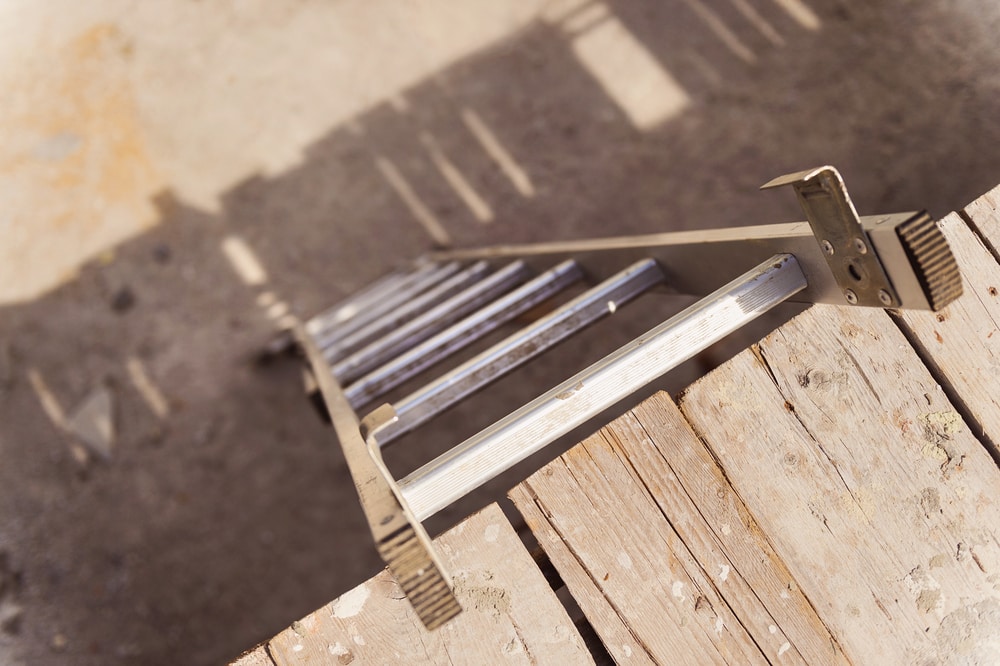
Ladders have been around for a very long time. Now, while folks that live in apartment buildings might not have much use for them, if you live on private property, we bet you already have one or two ladders stored in the garage. They come in different shapes and sizes yet serve one single goal: to help us reach high places (like the attic).
Today, we want to introduce you to the most surprising facts about ladders. First, we’ll learn about the various types of ladders and when they were invented. Next, we’ll check the statistics on ladder-related injuries and fatalities in the US and around the world and figure out how to stay safe while using a ladder. Let’s get started!

The 12 Most Surprising Ladder Facts
When did our species start using ladders? Who came up with the idea of folding ladders, and when? How many lives are lost each year to accidents that involve the use of ladders? Is human error the main cause of accidents and fatalities? Join us, and let’s take a quick look at the 12 surprising ladder facts.
Facts from History, Superstition, and World Records
Since the dawn of humanity, ladders have played an important role in our lives. In the Bible, we find mentions of Jacob’s ladder: it symbolizes the strong bond between the Earth and the Heavens. The Humble Ladder had seven rungs and helped Jacob create a connection with the Almighty. So, when were the first ladders invented? What other religious values do they hold? Who invented automatic ladders? Read on to find out!
1. Ladders Have Been Around for Over 10,000 Years
According to historians, one of the very first ladders in human history dates back to the Middle Stone Age. While it’s hard to tell exactly when our ancestors managed to build them, there is a rock painting of a ladder in Valencia, Spain, and it’s at least 10,000 years old. This painting is found in the Spider Caves (Cuevas de la Araña) and depicts two men climbing on it to reach a honeybee nest.
The ladder was made of grass tied together—that’s why it’s so thin. That said, scientists believe that the predecessors of modern ladders are much older. Ancient discoveries prove that our kind has been using tools for making rope 35,000–40,000 years ago. So, it’s very well possible that rope ladders were invented around that same time.
2. The World’s First Folding Ladder Was Built in 1862
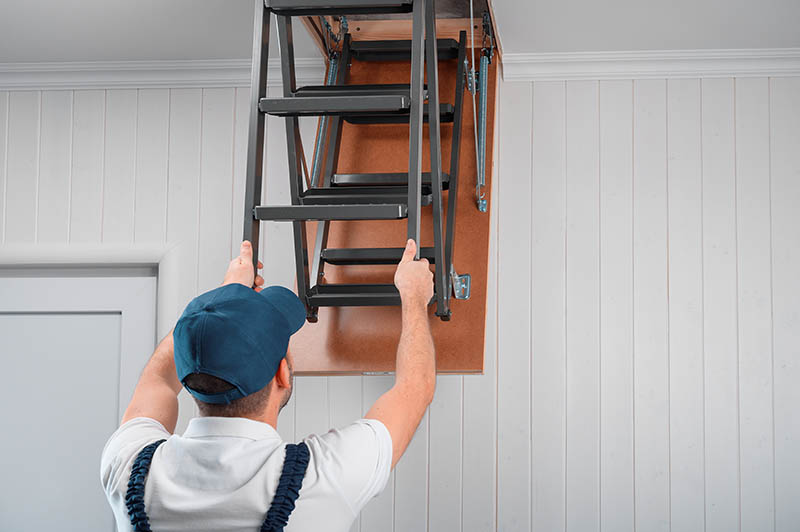
For many centuries, ladders used to be crafted from wood. And, while that made them cheap and relatively easy to build, these ladders lacked flexibility: you couldn’t fold, tilt, or re-adjust them in any way. But that all changed in the 19th century (in 1862, to be exact) when John Balsley crafted a folding stepladder. Just like his father, Balsley was a gifted carpenter from Ohio. He put hinges on the ladder to make it foldable.
A year later, another American visionary, Henry Quackenbush, patented the first-ever extension ladder. And in the 20th century, thanks to the development of materials like fiberglass and aluminum, ladders became lighter, safer, and more affordable. The first all-aluminum ladder was manufactured by the Aluminium Company of America in 1930. It was built for a Norwegian fire department.
3. Automatic Ladders Were Manufactured in 1936
Again, it all started with wooden ladders. Folding ladders, as well as extension, and aluminum varieties followed shortly. In 1982, the first attic stairs were built. They were specifically designed to provide easy access to the attic. However, before that, in 1936, Melvin Lewis developed automatic ladders. And it took Jean-Pierre Lair 74 years to come up with automatic attic ladders. Lastly, fire safety ladders were introduced in 1878.
4. The Romans Invented Siege Ladders in 537 AD

The glorious Roman Empire was always at the forefront of innovation and had the best weapons in its arsenal. In 537 AD, the Romans were the first to use a siege ladder. Large, heavy, easy to break, and hard to move around on rough, uneven terrain, siege ladders weren’t the Empire’s most efficient tool. However, when used properly, breaching ladders could give the offenders the upper hand in a battle.
Back in the day, castles had moats, trenches, and other barriers right in front of the walls. But, with the help of a siege ladder, Roman legionaries were capable of crossing the defensive lines. So, instead of having to lose countless lives to bring the walls down, they could just “hop over” them. Besides, thanks to the fortified platform at the top of the ladder, the soldiers had the ability to attack the archers on top of the walls.
5. The World’s Biggest Ladder Is 135 Feet Long
According to Guinness World Records, the longest ladder in history was built in 2005. It’s made of wood and reaches 135 feet in height (that’s more than 40 meters). Overall, it has 120 rings that hold the whole thing together. This ladder was manufactured by the Handwerks Museum located in Austria (St. Leonhard, to be exact). The man behind the project is Thomas Höllerer.
To put things into perspective, the recommended height for a ladder is 16–20 feet. We’re talking about outside use, of course. If you’re mostly going to use it indoors, go for a 2–8 feet ladder. It will be lightweight, easier to carry around, and sufficient for most tasks. Now imagine how tiny it would look compared to the 135-foot giant!
6. Fiberglass Ladders Are the Safest Option
Aluminum ladders are leading the market right now. However, since fiberglass ladders are non-conductive, you can use them when working on electric cables and wires. That’s why most electricians only invest in fiberglass ladders. Another big pro of fiberglass: it’s incredibly durable, long-lasting, and doesn’t break under pressure (like wood, for example).
Lastly, it’s practically immune to fire, water, and UV rays. It easily handles extreme temps, high humidity levels, mold, and sun rays. Aluminum ladders aren’t as heavy, though, which makes them easier to move around. Plus, they can handle more weight (up to 500 pounds) and come at a more affordable price.
7. Ladder Superstition: Number 3, the Afterlife, and Gallows
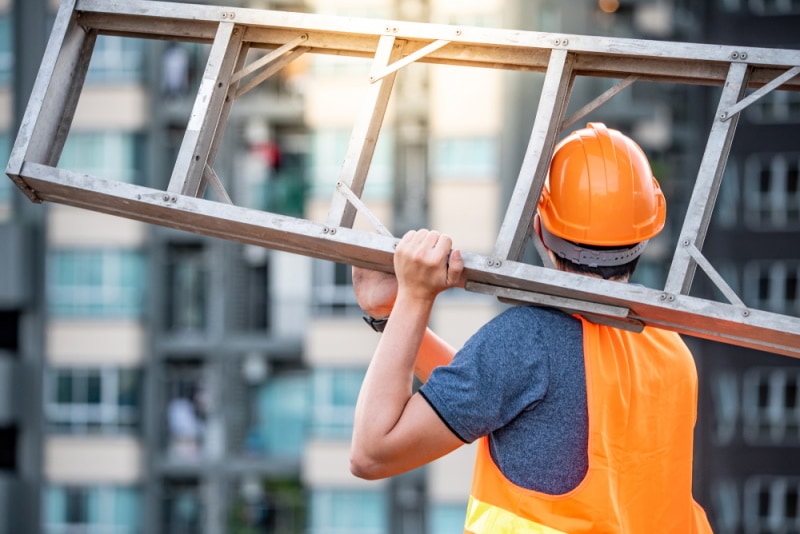
In Christianity, the number 3 represents the Holy Trinity, and both the letter and the triangle are sacred. And when you put a ladder against a firm wall, that creates a triangle shape. In ancient times, walking under a ladder while it was leaning against the wall was prohibited. It was believed that doing so would break one’s bond with the Trinity. They used to hang people for doing this!
In Egypt, it was customary to leave a ladder inside the tomb of deceased loved ones to provide easy passage into the afterlife. Again, walking under that ladder was taboo, as it would’ve made it impossible for the dead person’s soul to reach the afterlife. Finally, in Medieval Europe, back when gallows were common, most people were afraid to walk under a ladder and provoke the spirits of the people that were hanged.

Facts from Accident, Injury and Death Statistics
Ladders make our lives easier: they help climb up the roof, fix the gutters, reach the attic, or grab something from a high-mounted cabinet. Unfortunately, they can also be highly dangerous. The following list includes the most disturbing facts about injuries and fatalities that involve the use of ladders. Take a quick look, and always remember the importance of safety!
8. Each Year, More Than 500,000 People Are Treated for Ladder-Related Injuries

According to a detailed report by the CDC, more than half a million people in the United States seek treatment for various injuries caused by ladders. For the most part, they get hurt by falling from a ladder. And 33% of those 500,000 injuries (164,000 in total) are treated in the emergency room. Most folks that get into these accidents pick the wrong ladder for the job, place it in the wrong spot, or use it incorrectly.
Often, they don’t wear any protective gear and use old, damaged ladders. Overall, that costs the US government $24 billion. We’re talking about medical and legal expenses, the cost of work loss, and more.
9. On Average, Ladder Accidents Take 300 Lives per Year
More than 300 people die from falling off a ladder each year. Of those 300 people, most work in construction. Now, it’s recommended to use ladders for no longer than 30 minutes. If the job is taking around an hour, you should use a different instrument or piece of equipment. Unfortunately, this protocol isn’t always followed.
If we look at the statistics from the United States Bureau of Labor, we’ll see that in 2020, the number of fatal ladder-related injuries went down 5.8% compared to 2019 (161 versus 171). However, in 2018 and 2017, the numbers were significantly lower (145 and 156, respectively). And one more thing: in the last decade, 43% of fatal falls were caused by a ladder.
10. Human Error is the #1 Cause of Ladder Accidents
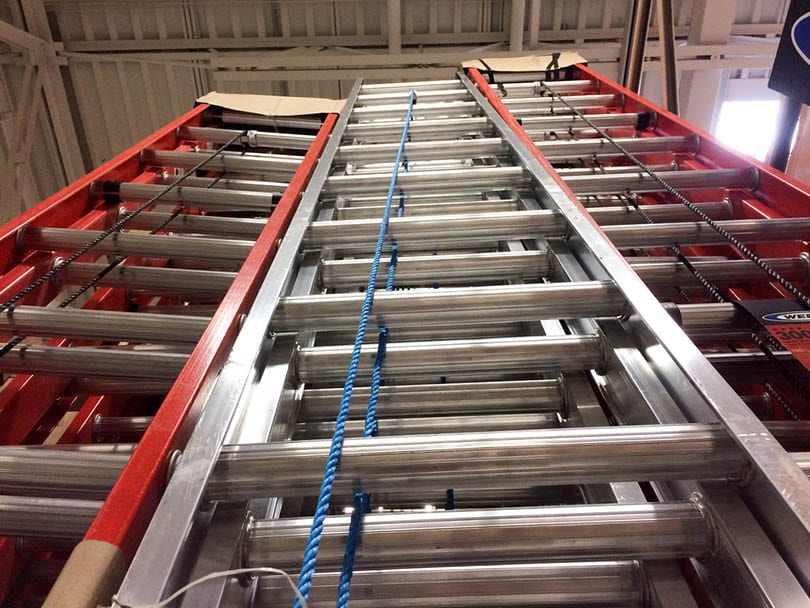
Wood ladders tend to break. Aluminum ladders, in turn, are known to slide off the edge (that’s what happens in 40% of cases). And then there are weather elements and other factors. However, human error is still the biggest cause of accidents on ladders. For example, nearly 50% of all accidents happened when the persons climbing up the ladder had something in their hands.
On the bright side, OSHA believes that most ladder accidents can be avoided with the right kind of training (when the workers follow work safety practices). The organization also stresses the importance of double-checking the equipment before using it. By the way, March is National Ladder Safety Month.
11. Ladders Account for 81% of Fall Injuries Among Construction Workers
In the US, around 20% of fall injuries at work involve ladders. That number is almost four times higher (81%) when we check the statistics for construction workers. That’s right: the vast majority of employees in construction-related jobs that end up in EDs get injured when they fall from a ladder.
According to the Bureau of Labor, most nonlethal injuries involving ladders happen in the installation, maintenance, and repair groups (5,790 in 2020). Construction/extraction is the second largest group (5,370 accidents in a year). Overall, in 2020, there were around 23,000 nonfatal injuries where ladders played the main role.
12. You Can Get a Ladder for Just $70
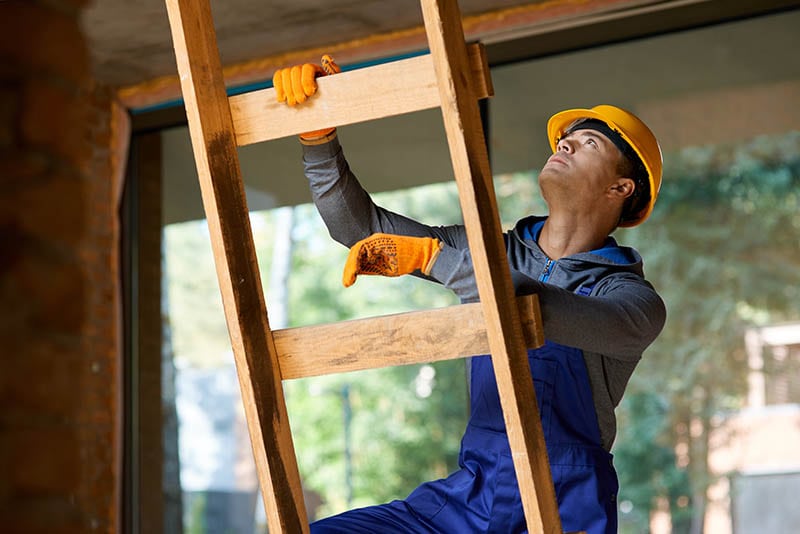
How much do ladders cost? This greatly depends on the type. Fiberglass is more expensive than aluminum ($100–150 versus $150–250). Wood is the cheapest material ($70–130), yet it’s susceptible to natural elements and easier to break. Besides, the more adjustable the ladders are, the higher the cost will be. The duty rating (maximum safe load capacity) and height affect the price as well.
That said, a solid ladder to use around the house will set you back $100–300. Step ladders are available for a lower price: $100–250. But they have extras like rubber feet, anti-slip steps, and maybe also a platform for a bucket. Big extension ladders (20–25 feet) are sold for $250–400. Not ready to invest in a ladder yet? You can always rent it from Home Depot and other retail stores.

Ladder Safety Tips: A Quick Guide
- The first thing to check is the length. You want a ladder that fits the task at hand perfectly. When it’s too short, that makes it easier for the ladder to slide off or just fall off the edge (when you’re doing work on the roof, for example). Extra-long ladders aren’t that great, either, as they make it difficult to maintain balance.
- For most situations, a straight ladder is the best option on the table. However, when trying to clean the leaves and debris off the roof, an extended ladder will be a better choice. Just set it at the correct angle, make sure the surface is nice and dry (not slippery), and climb it.
- Don’t forget about the carrying capacity. Even if you’re going to be the only person standing on the stairs, do keep in mind that whatever tools or equipment you’ve got in your hands will put additional pressure on the ladder. So, always look for a ladder with an above-average weight capacity.
- Next, check whether the ladders have an ANSI certification and are OSHA-compliant. This means they were tested rigorously and have proven to be equally safe and reliable. Both organizations are very strict when setting safety standards or technical specifications.
- Don’t ever use old or worn-out ladders—they can give up on you at any moment. And before climbing it, take a moment to secure the ladder. Find even, firm ground for it to stand on. If the ground is shifting, that’s a disaster waiting to happen. Ideally, ask a friend to hold the ladder while you’re using it.
- We also recommend using the NIOSH Ladder Safety App. It’s available on the CDC website for free and will help set the right angle for the ladder, ensure proper placement, and more. You can download it for both Apple and Android devices in English or Spanish.

Conclusion
Alright, that concludes our list of the most intriguing, surprising, and alarming facts about ladders. Unfortunately, while ladders do a great job of helping us fix the roof or grab something from a top shelf, they can also be very dangerous. As we learned today, the number of severe accidents and fatal accidents caused by ladders is very high both in the States and around the globe.
So, be extra careful when climbing up a ladder and double-check everything to make sure you’re not putting yourself or a loved one in danger. Also, don’t forget to check out our quick safety guide. Even if you’re a seasoned construction worker, you can’t be too careful when climbing up a ladder!
Featured Image Credit: Ground Picture, Shutterstock
Contents

